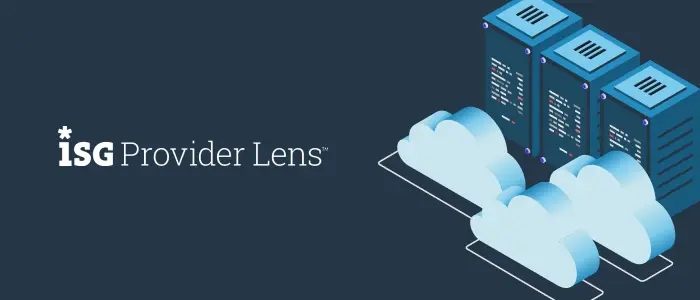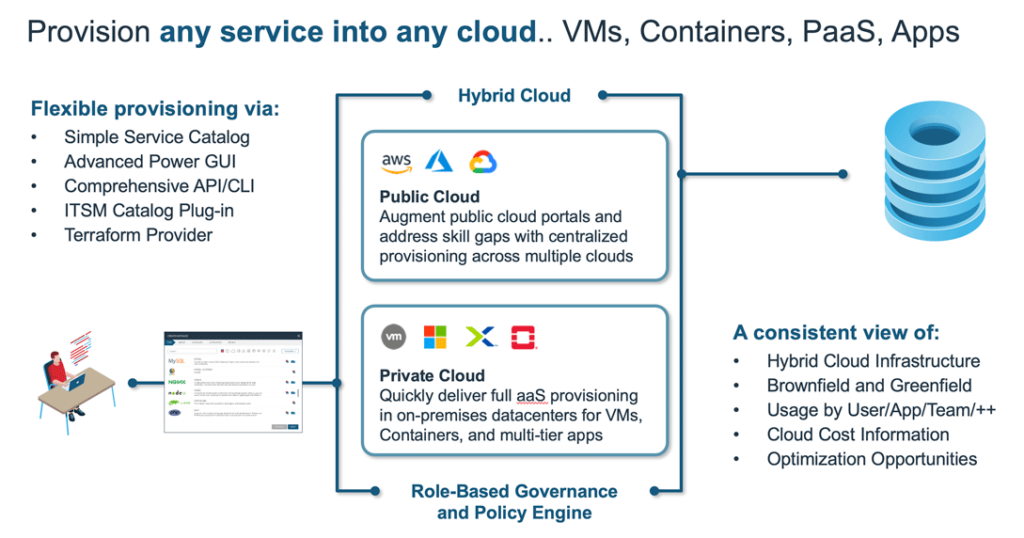
Look around your enterprise. Hybrid clouds abound. Here. There. Everywhere… Bringing to mind the mythical hydra, a monster with many heads, greatly in need of taming. And wherever you see these myriad hybrid clouds, it means there’s hybrid infrastructure in need of management both in the cloud and on-premises.’
Hybrid infrastructure simply defined
A hybrid infrastructure is an IT infrastructure environment that incorporates a’ mix of on-premises data centers, private clouds, and public cloud resources. Within this environment, operating systems and applications can be deployed at any point. A combination of hybrid IT infrastructure services and cloud services are used to manage and monitor your entire IT infrastructure and the applications it supports.
In a recent article, Tech Target refers to IDC predictions to help define the current state of hybrid cloud infrastructure, noting IDC believes that ‘by 2024, the majority of legacy applications will receive some modernization investment, with cloud services used by 65% of the applications to extend functionality or replace inefficient code. And by 2025, 60% of enterprises will implement dedicated cloud services either on-premises or in a service provider facility to manage security, compliance, and performance.’
Today, the majority of enterprises depend on a hybrid cloud infrastructure to deliver innovative digital services and capture new markets, building on varying cloud platforms that are designed to bring greater flexibility and extensibility to your organization’s existing infrastructure. There’s definitely some taming to be done!
Managing the best of multiple cloud worlds
Public cloud. Private cloud. Hybrid cloud. Multi-cloud. All have their advantages and disadvantages. At the end of the day, when it comes to managing related infrastructures, a hybrid model offers the best option for a wide range of needs ‘ including meeting workload agility, compliance, and disaster recovery requirements. The benefits arrive in the form of greater control, scalability, security, cost savings, and business continuity.
One of the main challenges can be consistently provisioning applications into these hybrid environments while also meeting organizational demands around security, governance, and financial control. Some organizations spend millions of $’s trying to build a consolidated centralized platform to rule them all while others treat hybrid cloud like the wild west and expect IT operations to become experts in every possible cloud and tool their development teams use. Neither option is sustainable.
Taming today’s hybrid cloud infrastructure can be easier than you think
It’s no exaggeration. Cloud environments of every sort ‘ and the hybrid infrastructure that supports them ‘ can be difficult to manage efficiently and effectively.’ Unsurprisingly, finding the best hybrid cloud and multi-cloud management software platform for your workloads can be equally challenging and fraught with complexity.
Legacy cloud management software popularized in 2010 to 2015 was trying to solve a governance problem for IT Ops while others were focused on optimizing public cloud spending due to failed lift and shift experiments. In the meantime, the world has moved on. But legacy cloud management platforms (CMPs) are still out there trying to solve yesterday’s problems.
Morpheus is different. We were designed by DevOps pros as part of an application factory inside a $3B private equity firm that needed agility, flexibility, and control. They couldn’t find the perfect tool so they built one. As a result, our solution combines the industry’s best cloud management with open container orchestration and powerful infrastructure automation.

Meeting modern cloud management challenges
Unlike early-generation CMP tools or brittle cobbled-together DIY platforms, Morpheus has a different design center. Because we were not born as a CMP, we’ve architected a platform that eliminates friction between Dev and Ops and is tailor-made for today’s Platform Operations teams. In fact, I’d go so far as to say it’s the industry’s first unified operations platform born for platform operations. Our goal is to simplify the consumption of infrastructure resources and accelerate application provisioning to support business transformation. We accomplish this with:
As a result, Morpheus has developed a normalized view of IT that spans hybrid clouds and the roles that consume those clouds to meet the needs of developers, platform teams, security teams, finance, and more. All are equal under our persona-based cloud management platform design. Our approach is modern, hybrid, and forward-leaning ‘ just what you need to tame that hybrid cloud infrastructure beast.
Request a Morpheus demo to see for yourself.